Carstens Tönnieshof
Rare Mid-Century Tall Green Vase - Carstens Tönnieshof - Form 7166-30 - 1970s
Rare Mid-Century Tall Green Vase - Carstens Tönnieshof - Form 7166-30 - 1970s
Couldn't load pickup availability
Step into the innovative world of mid-century design with this rare Carstens Tönnieshof vase, model form 7166-30.
Crafted in Vienna for Carstens and marked with "Austria" as its origin, this tall green vase reflects the creative spirit of the late 1960s to early 1970s.
Its deep green tin glaze, enriched with brown accents, beautifully enhances its unconventional, sculptural form.
A true testament to the era’s daring design, this vase offers a unique blend of art and functionality. Ideal as a standout piece on any shelf, it invites you to appreciate the refined craftsmanship and inventive spirit of Mid-Century ceramics.
- Material: Tin-Glazed Ceramic
- Model: 7166-30
- Style: Mid-Century Modern
- Place of Origin: Austria
- Mark: 7166-30, Tönnieshof Mark on bottom, Austria
- Date of Manufacture: 1970s
- Condition: Perfect condition
Dimension:
Height: 30 cm | 11.8 in
Diameter: 17 cm | 6.7 in
Weight: 1.3 kg
Share
- Worldwide Shipping
- Secure Packaging
- Loving Curation
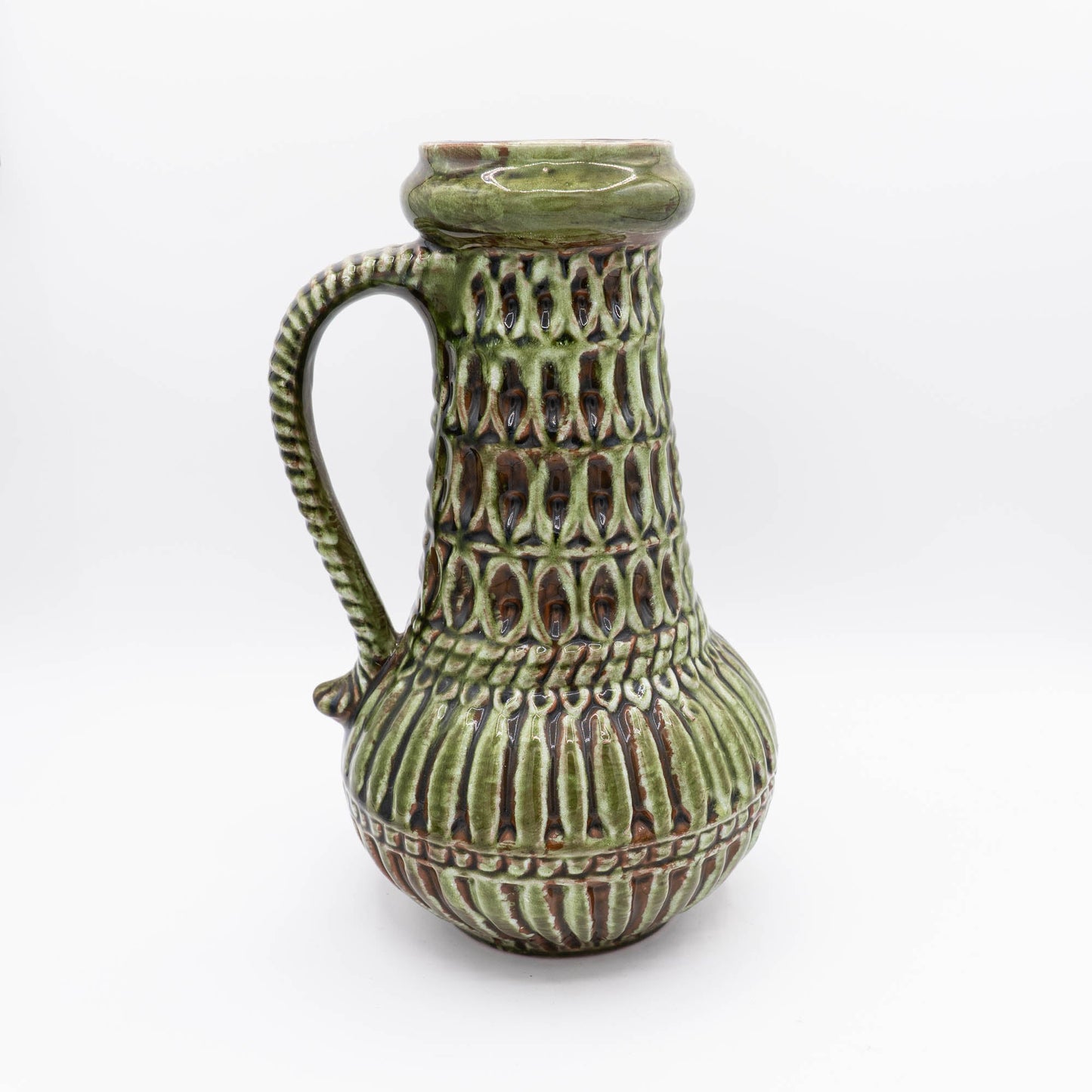
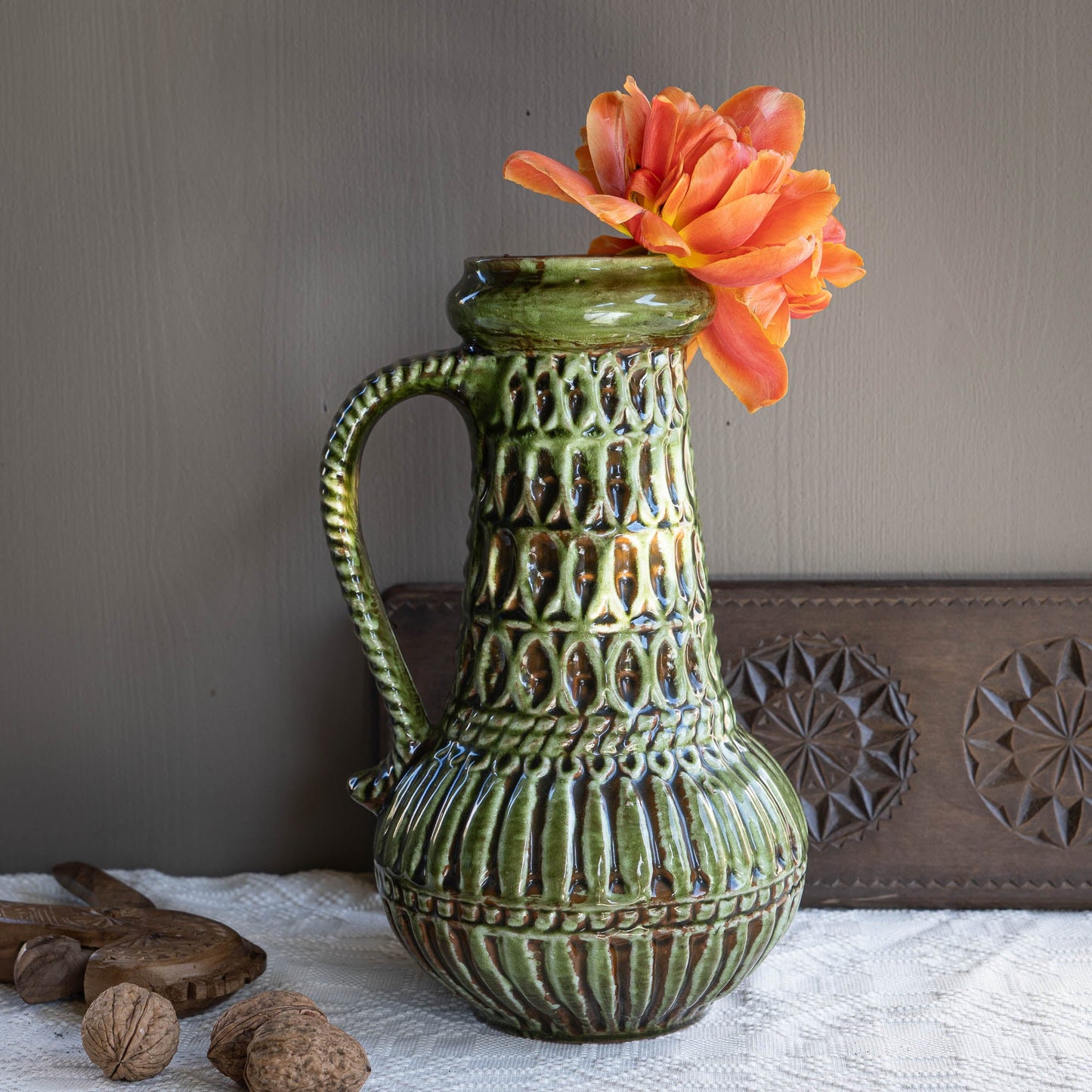

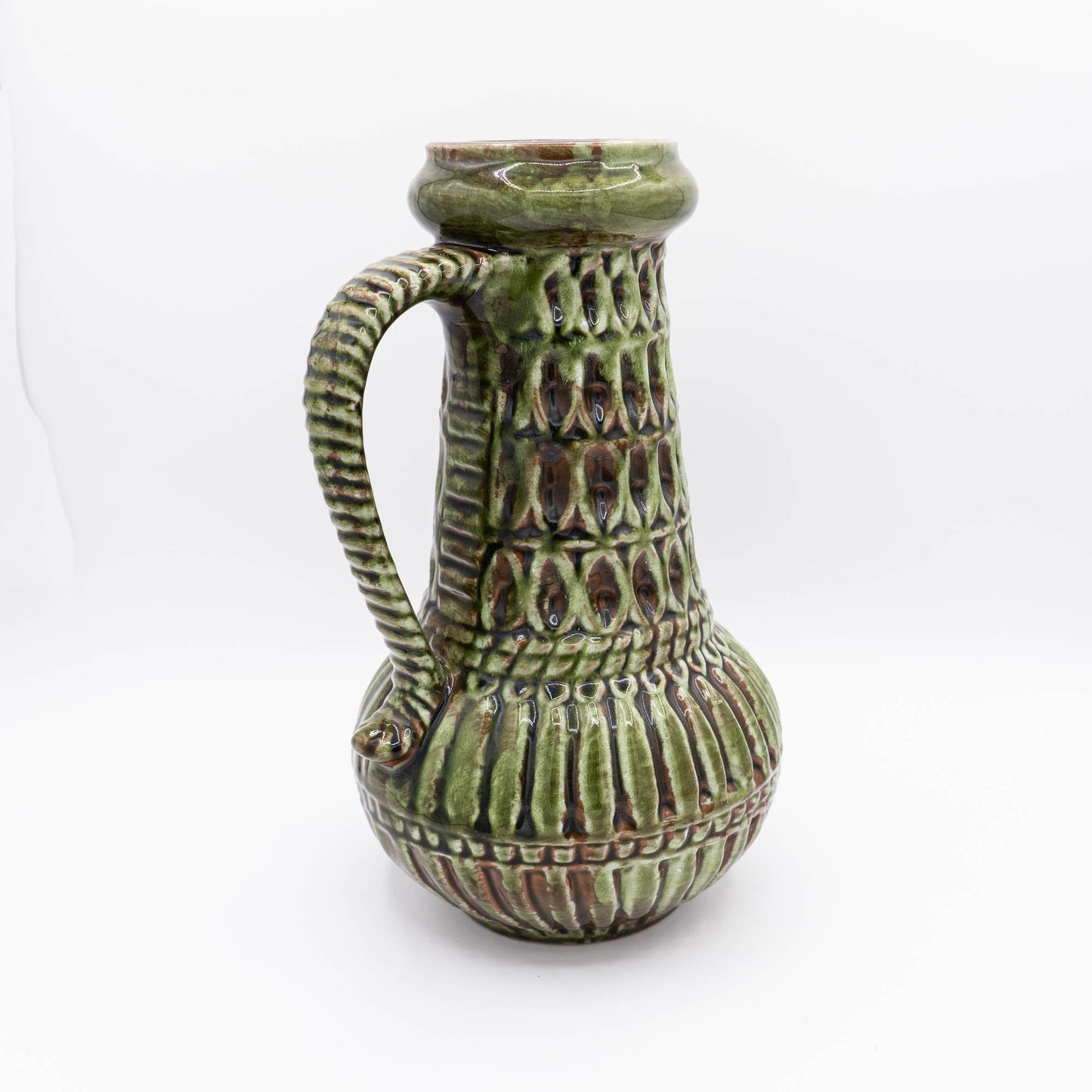
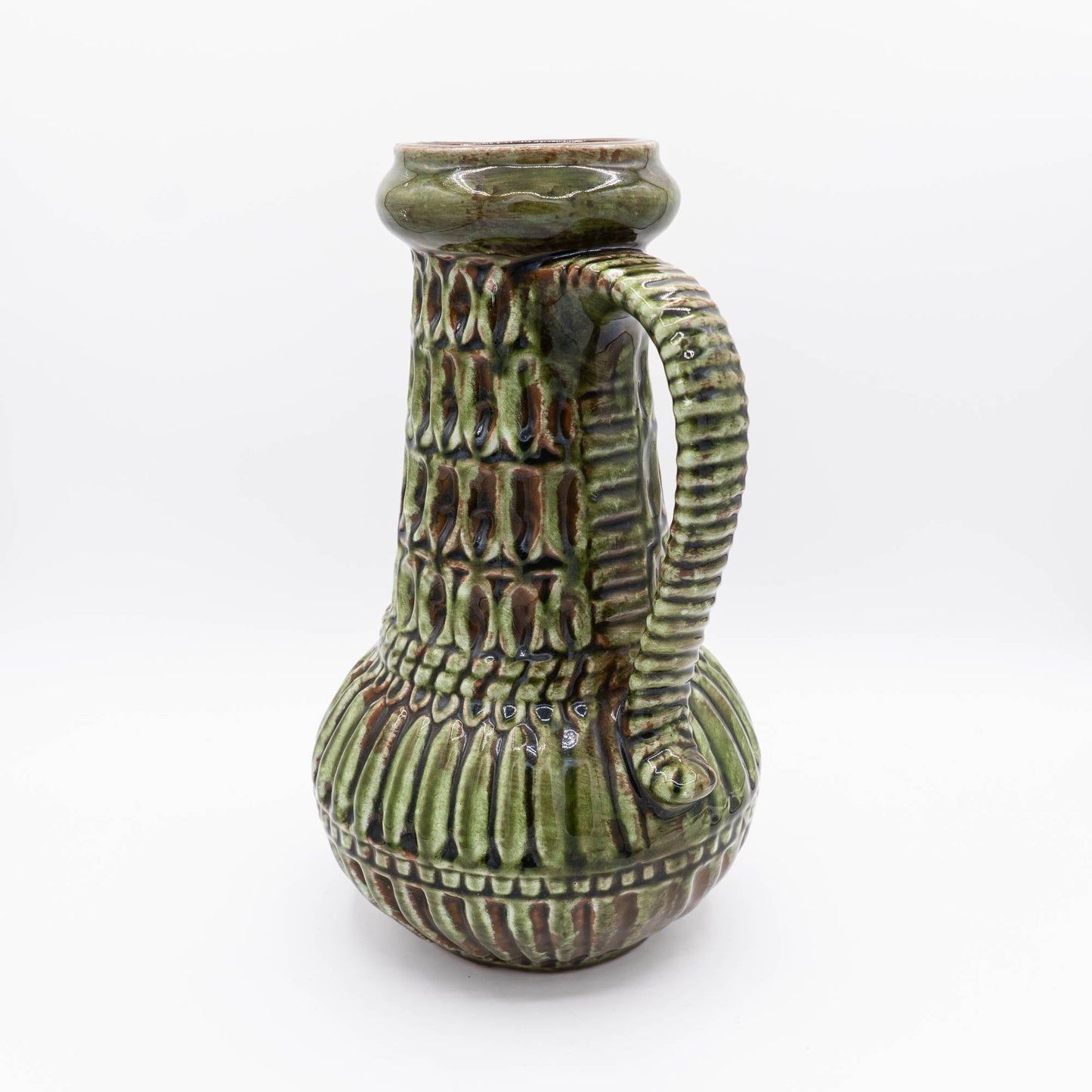
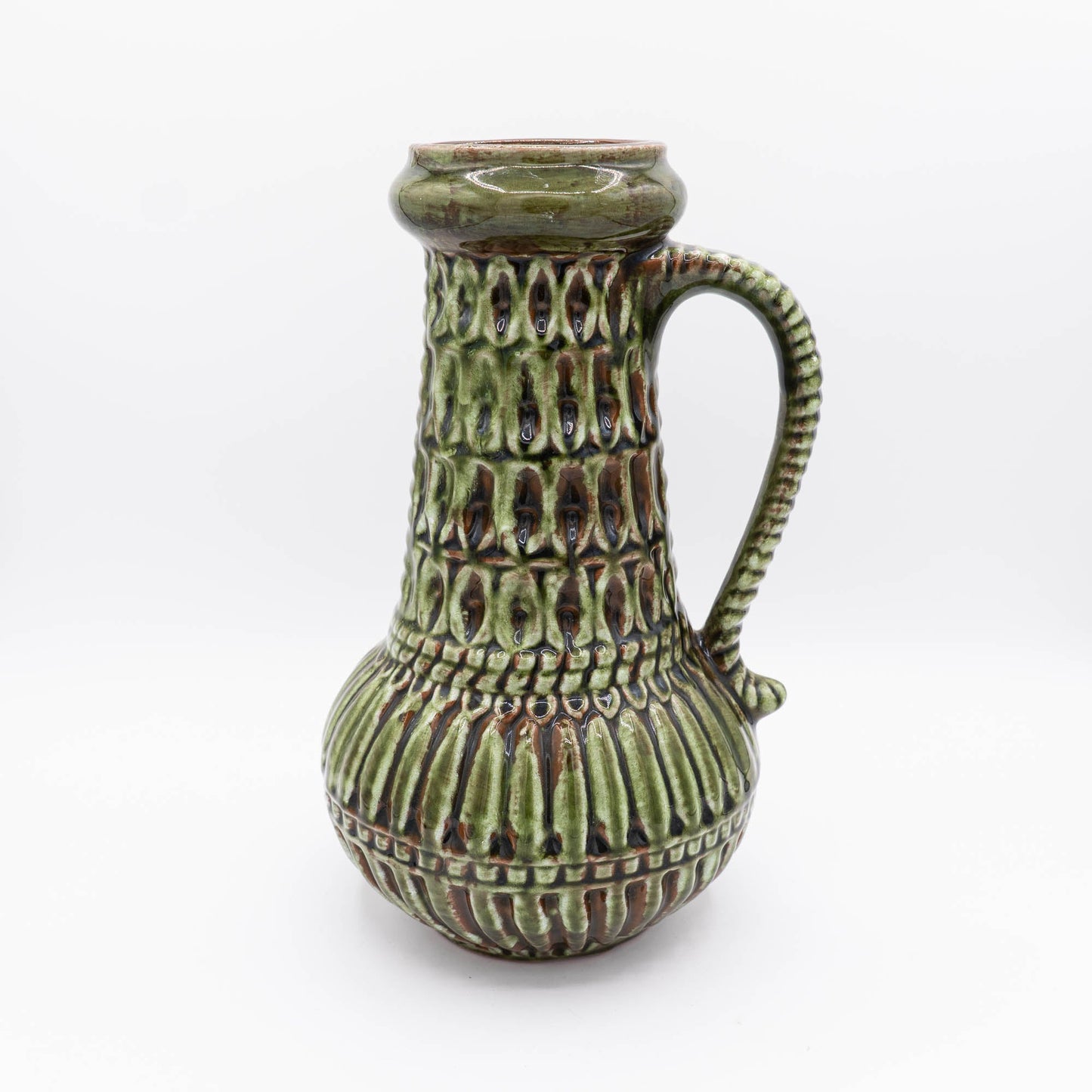
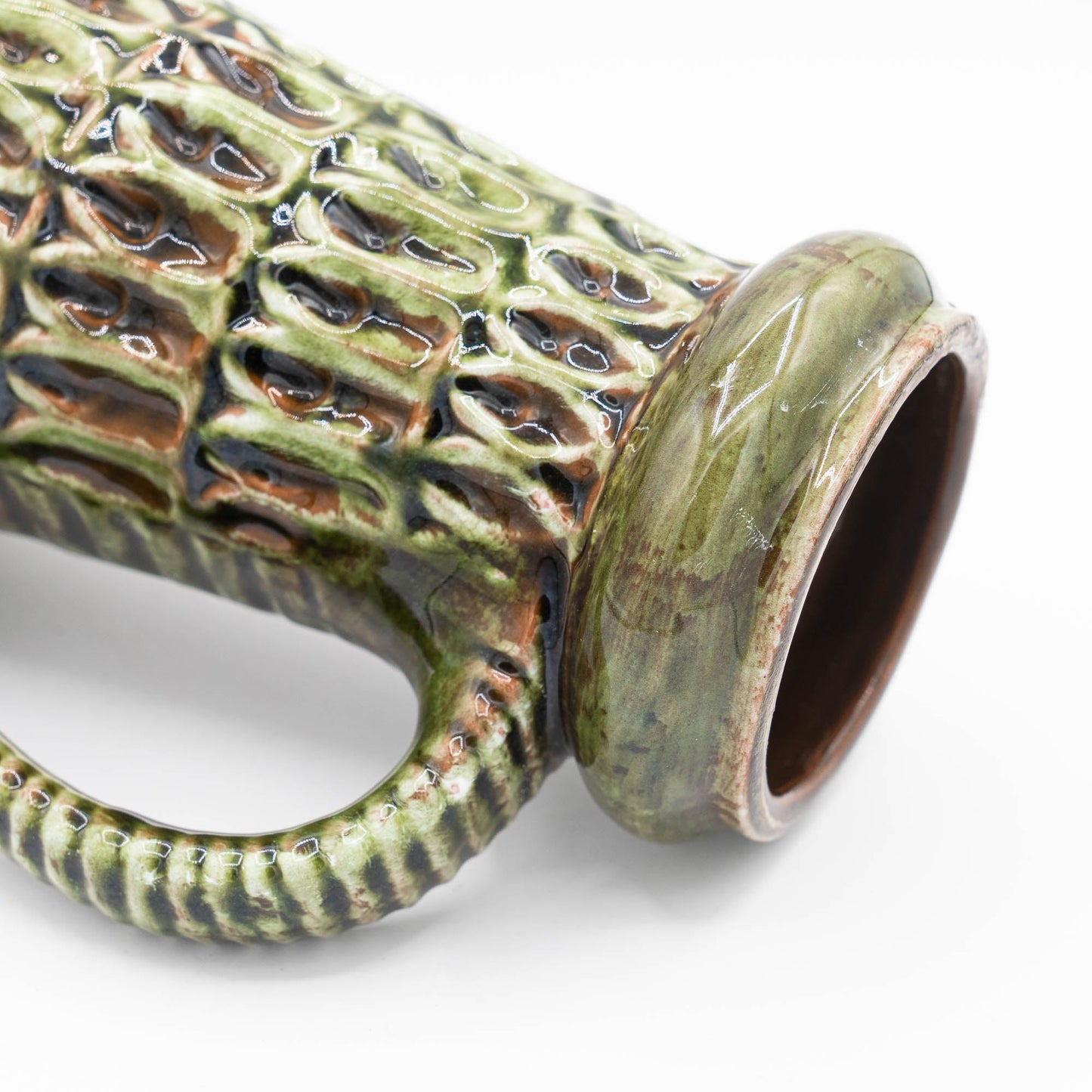
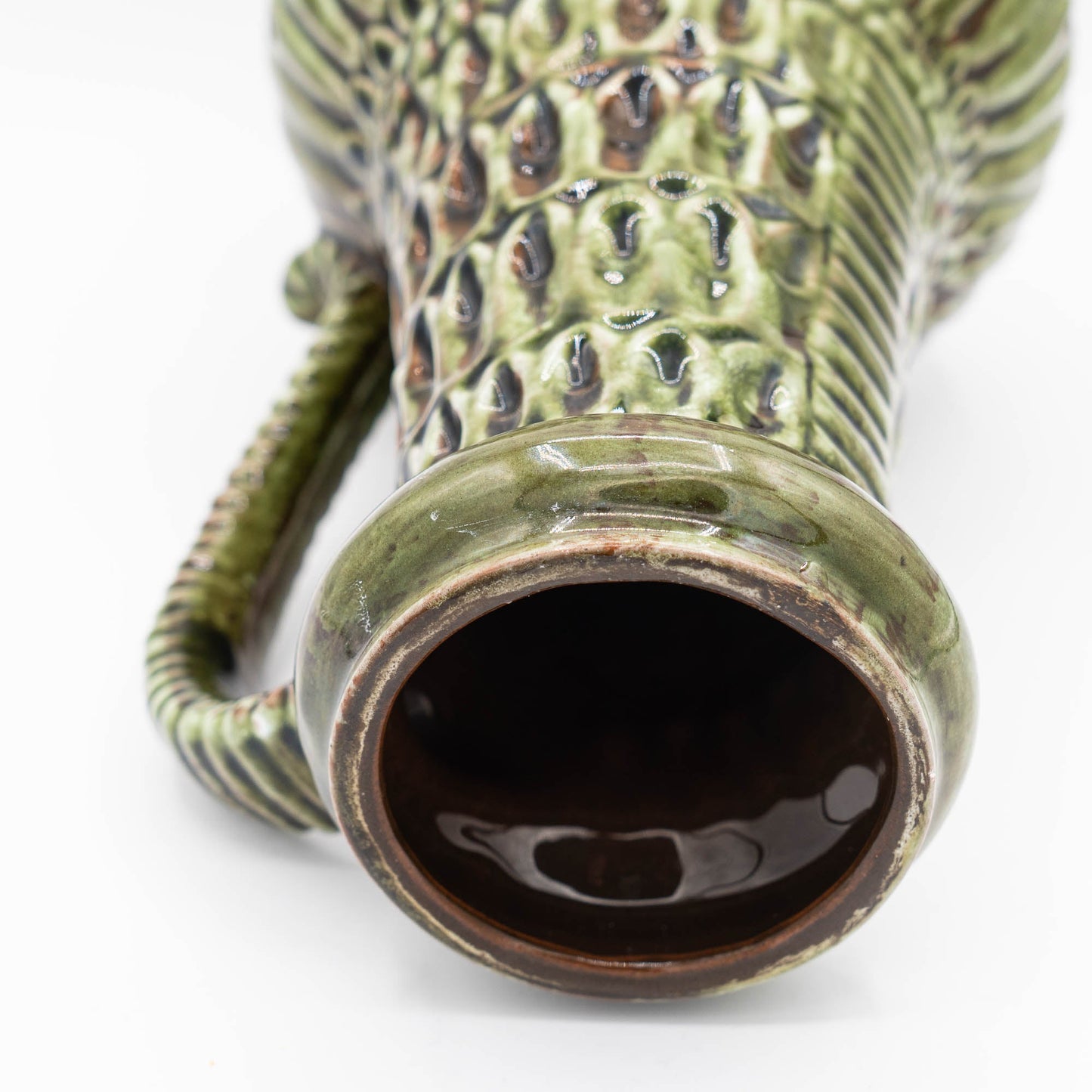
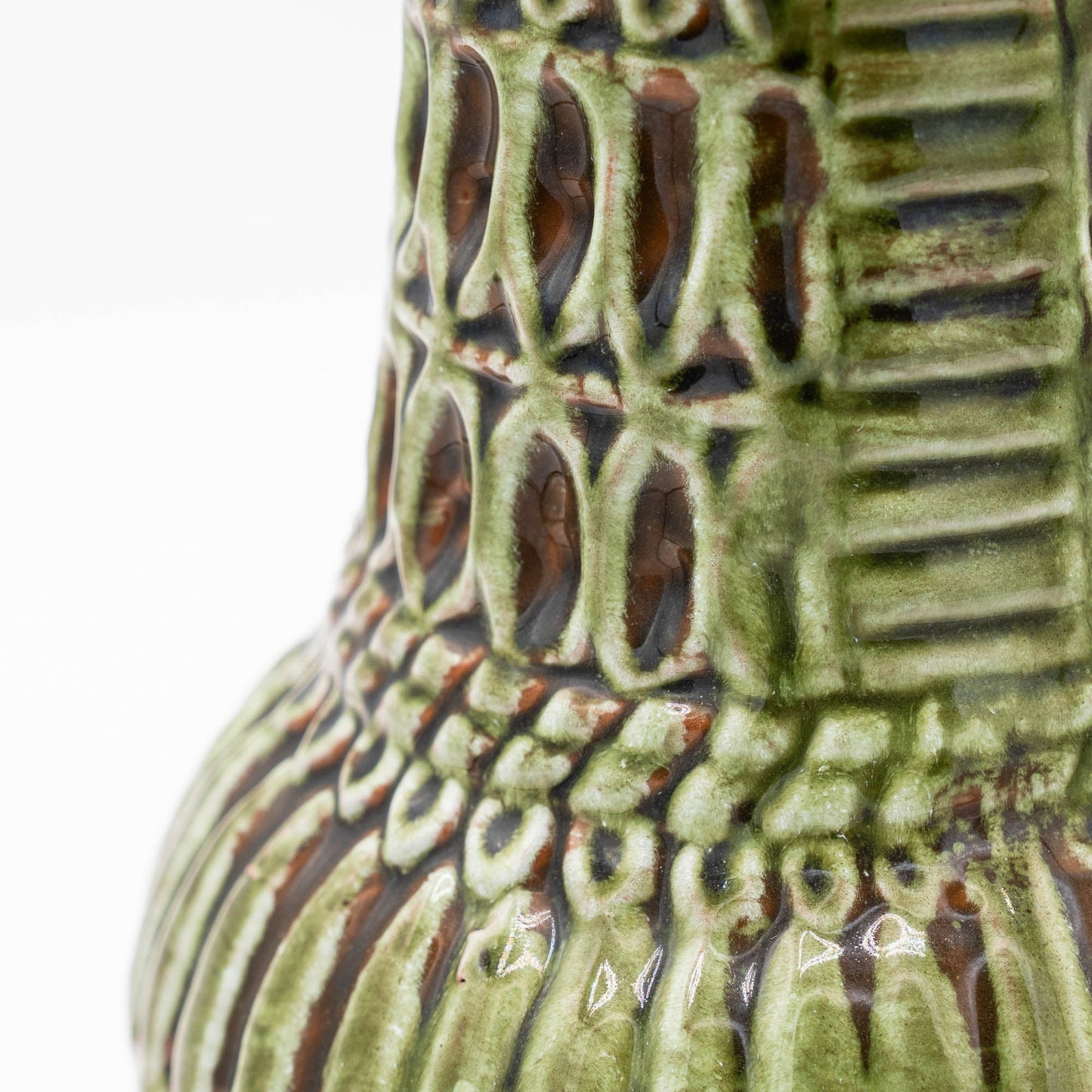
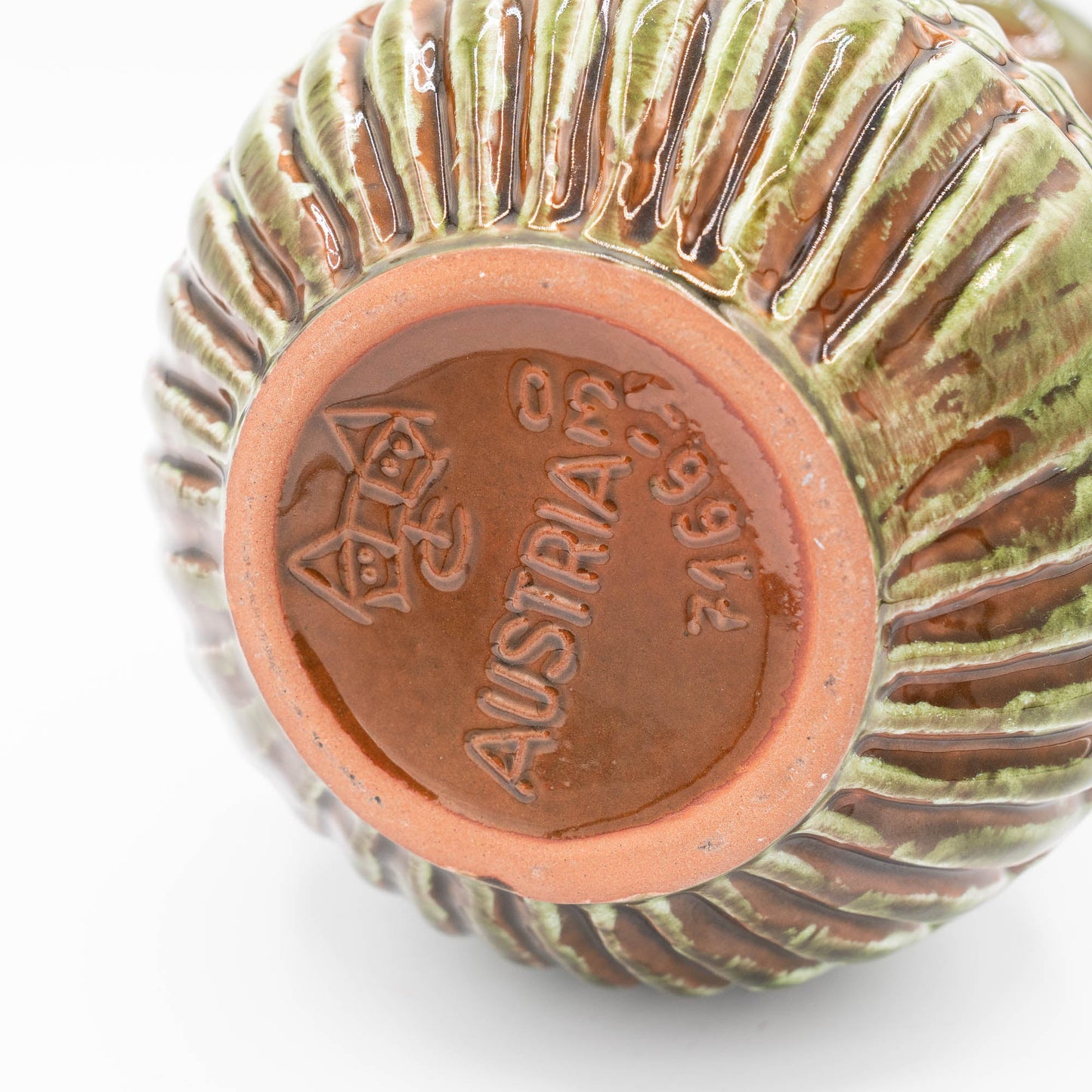
Origin & Maker
Carstens Tönnieshof was a well-known German pottery company, established in the mid-20th century and primarily associated with West German ceramics. The company was founded by Christian Heinrich Carstens and initially operated under the name "Carstens-Uffrecht." However, it wasn't until the post-war period, around the 1950s and 1960s, that Carstens Tönnieshof truly rose to prominence, producing a wide range of decorative ceramics that have become iconic pieces in mid-century design.
The company’s work is often characterised by bold, experimental forms, vibrant glazes, and unique, textured finishes. Many of their pieces, like other West German ceramics of the time, fall under the "Fat Lava" style, which became incredibly popular during the 1960s and 1970s. These designs often featured thick, volcanic-like glazes, with rich colour palettes and rugged surfaces, giving the pieces a distinctive and dramatic appearance.
Carstens Tönnieshof produced a variety of items, from vases to decorative tableware, and was renowned for their innovative use of form and glaze, often pushing the boundaries of conventional ceramic design. Today, Carstens' work is highly collectible, and their pieces remain a hallmark of mid-century modern German pottery, valued for both their aesthetic appeal and craftsmanship.
Blog posts
View all-

A Serendipitous Morning at the Rue de Bretagne ...
There are few joys in life that match the thrill of stumbling upon a hidden treasure, and for me, flea markets hold that magical allure. One of my favourite flea...
A Serendipitous Morning at the Rue de Bretagne ...
There are few joys in life that match the thrill of stumbling upon a hidden treasure, and for me, flea markets hold that magical allure. One of my favourite flea...
-

Emile Bourgeois and "Le Grand Dépôt" in Paris
Recently, I found this stunning Sarreguemines wash set. It was at the Brocante in Belfort, France. On this day, we had got up at 4 AM to be there in...
Emile Bourgeois and "Le Grand Dépôt" in Paris
Recently, I found this stunning Sarreguemines wash set. It was at the Brocante in Belfort, France. On this day, we had got up at 4 AM to be there in...
-

The Legacy of Robert Haviland: A Journey from N...
The story of Robert Haviland porcelain is one of artistry, transatlantic ambition, and enduring heritage. It begins in the mid-19th century when David Haviland, an enterprising New Yorker, founded Haviland...
The Legacy of Robert Haviland: A Journey from N...
The story of Robert Haviland porcelain is one of artistry, transatlantic ambition, and enduring heritage. It begins in the mid-19th century when David Haviland, an enterprising New Yorker, founded Haviland...













